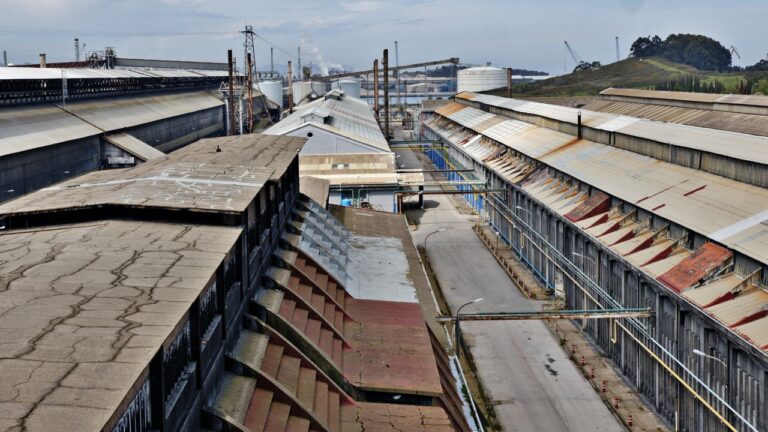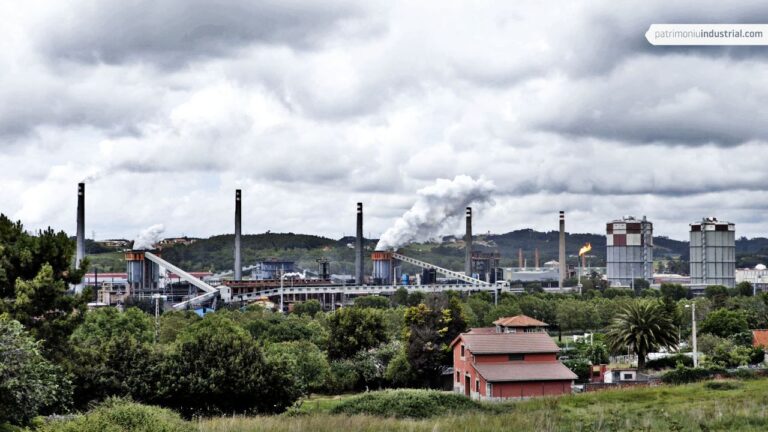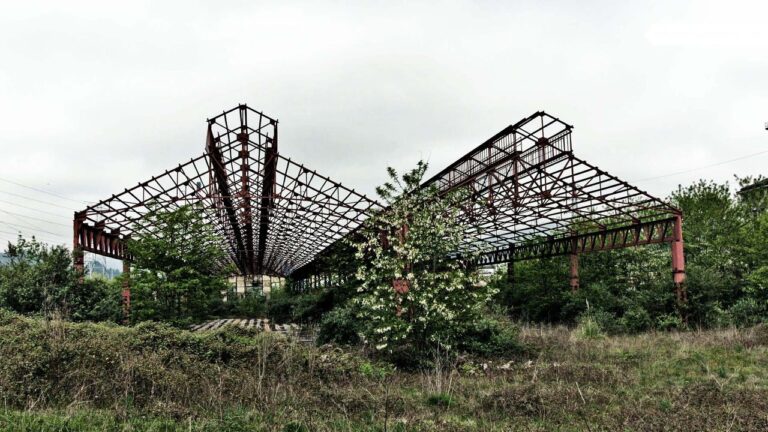
by Javier Gancedo
Specialized Industrial Technician degree. Senior mechanic at ENSIDESA’s mechanic shop for 36 years. Supervisor of the transformation of the company library into the ENSIDESA Documentation Centre, which he managed during the period 1990-2010.
Iron metallurgy signified the launching of the industrial revolution in Asturias, and it was shortly followed by the processing of other metals. This resulted in a smokestack-filled region, with the mining valleys, Gijón, and the Avilés area as its main hubs.
The first real attempt to create a modern iron industry in Asturias took place at the end of the eighteenth century, with the construction of the blast furnaces called Volcano and Fireblaze at the Trubia weapons factory, which were intended to be fed by the coking furnace installed by Casado de Torres in Langreo. Following a number of other attempts with varying degrees of success, it fully developed in the middle of the nineteenth century, when two large plants were built: Pedro Duro’s in Langreo and Numa Guilhou’s in Mieres.
Even though the transition from iron to steel meant an advantage of Basque companies over Asturian ones, the latter managed to stay in business by diversifying – towards coal, in Duro’s case – or specializing – towards engineering, for instance, as Fábrica de Mieres (Mieres Company) did.
Once imported coal took over, steel plants were built on the coast, like Moreda-Gijón and the ENSIDESA plant in Avilés – the latter created by the National Industry Institute (INI) at the end of the 1950’s, joining the obsolete, undercapitalized regional steel industry. Currently owned by ArcelorMittal, the Gijón and Avilés plants are the only full-cycle steel plants in Spain.
Yet not every metallurgy industry in Asturias focused on iron and steel. Real Compañía Asturiana de Minas (Royal Mining Company of Asturias) began a zinc metallurgy industry in Arnao in 1858 which is still in business, owned by Asturiana de Zinc (Asturian Zinc Company), while National Industry Institute’s ENDASA had an aluminium plant located between Avilés and Gozón – two more instances of an industrial process as massive as it was relevant. Metallurgy contributed to the development of the region’s coal mining industry, all of which has produced an exceedingly interesting heritage.
ALONSO LORENZO, A., La Real Compañía Asturiana de Minas, Historia vivida, El Comercio, 1997.
OJEDA, G., Duro Felguera. Historia de una gran empresa industrial, Grupo Duro-Felguera, 2000.
SUÁREZ ANTUÑA, F. “Del hierro al acero, pasando por el carbón. El caso de la Sociedad Metalúrgica Duro Felguera”, en ÁLVAREZ ARECES, M.A. (Coord.), Del hierro al acero: forjando la historia del patrimonio industrial metalúrgico, Incuna, CICEES, 2008.
SUÁREZ ANTUÑA, F. “Paisaje minero y fábrica de zinc de Arnao”, en 100 elementos de Patrimonio Industrial en España, TICCIH-Instituto de Patrimonio Cultural de España, Madrid. 2011.
SUÁREZ ANTUÑA, F. Arnao. Análisis geográfico y Patrimonio Industrial, CICEES, Consejería de Cultura y Turismo del Principado de Asturias, 2008.
SUÁREZ MENÉNDEZ, G., “El arte del ingeniero: la actuación de Carlos Fernández Casado en ENSIDESA, Avilés”, en ÁLVAREZ ARECES, M.A. (Coord.), Diseño+imagen+creatividad en el patrimonio industrial, 2011, p. 169-176.
TIELVE GARCÍA, N., “El Patrimonio Industrial Asturiano: UNINSA”. Notas sobre el Patrimonio Industrial asturiano, CPR Avilés, 2002.






Recent Comments